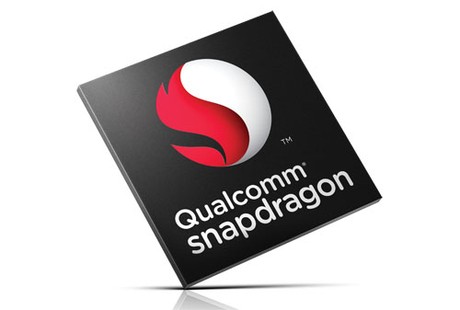Qualcomm Snapdragon 610 and 615 With LTE Up to 8-cores
This week during Mobile World Congress 2014, Qualcomm added the Snapdragon 610 and 615 to its Snapdragon 600 tier for high-end mobile computing devices. Both chips integrate the company’s third generation LTE modem, are designed to work with Qualcomm’s RF360 front end solution, and integrate HSPA+ (up to 42Mbps), CDMA, and TD-SCDMA.
The company reports that the Snapdragon 615 is actually the mobile sector’s very first octa-core solution with integrated LTE and 64-bit capabilities. The Snapdragon 610 isn’t quite as hefty, providing the same LTE and 64-capabilities in a quad-core setup.
News of the new Snapdragon follows the release of the company’s 410 chipset launched back in December. Along with the 615 and the 610, the 410 supports ARMv8, which offers the most power-efficient implementation while maintaining compatibility with existing 32-bit software. All three are also pin compatible, and use the same software, including 64-bit ARMv8 CPU support.
“Additionally, each chipset integrates an identical LTE modem, utilizing the same core technology that has already shipped in hundreds of millions of prior chipsets used in handsets and certified by operators across the globe,” reads the company’s press release.
The 610 and 615 chips feature Qualcomm’s Adreno 405 GPU, bringing an Adreno 400 series GPU from the premium 800 Series to the high-end Snapdragon 600 tier for the first time. This GPU supports the latest graphics APIs such as DirectX 11.2 and OpenGL ES 3.0. This GPU also supports displays up to 2560 x 1600 and Miracast.
“Wireless content can be sent with high efficiency through the use of the embedded H.265 hardware decoder and integrated Qualcomm VIVE 802.11ac Wi-Fi and Bluetooth 4.1 solutions, reads the company’s press release.
The company plans to sample the Snapdragon 615 and 610 in the third quarter of 2014, and then release a Qualcomm Reference Design (QRD) version of each chipset in the fourth quarter of 2014. The first devices using these two chipsets are also expected to arrive in the fourth quarter.
Get Tom's Hardware's best news and in-depth reviews, straight to your inbox.

Kevin Parrish has over a decade of experience as a writer, editor, and product tester. His work focused on computer hardware, networking equipment, smartphones, tablets, gaming consoles, and other internet-connected devices. His work has appeared in Tom's Hardware, Tom's Guide, Maximum PC, Digital Trends, Android Authority, How-To Geek, Lifewire, and others.
-
InvalidError Reply
And ARMv8 does have better performance per core on top of wider registers and extra general-purpose registers to better optimize code with.12754870 said:I want more performance per core, not more cores! -
grebgonebad ReplyI want more performance per core, not more cores!
While this is true additional cores are still beneficial. Dedicating a core to, say, 3G/4G, another to background apps and another to the OS (Going by utilising an 8 core where all cores can be used at the same time, i.e. not the Samsung Exynos 8 core...) would leave more cores free to handle taxing applications. Albeit there comes a point where per-core performance negates the need for multiple cores somewhat, but mobile processors are not at that level at the moment. -
InvalidError Reply
A few months ago, Qualcomm's (now former) CEO was laughing 64bits off too.12757217 said:A few months back, Qualcomm dissed Mediatek about having 8 cores.
If all the other ARM vendors are going octo-core 64bits for their higher-end parts, Qualcomm has little choice but to go there as well or risk hemorrhaging market share by falling too far behind the progress curve.
